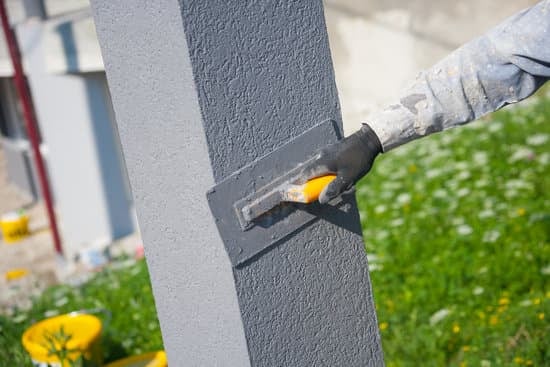Are you tired of dropped calls and slow internet at home? In this article, we will explore how to improve your cell signal at home. A strong cell signal is crucial for staying connected, whether it’s for work, personal communication, or emergencies. Understanding the factors that can affect your cell signal strength and learning how to optimize it can make a significant difference in your overall connectivity experience.
There are various reasons why you might be experiencing poor cell signal at home, including distance from the nearest cell tower, building materials, and even the type of phone you have. Finding the best spot for signal reception in your home and making adjustments to your network settings are just a couple of ways to enhance your cell signal.
In addition, considering options such as upgrading your phone with better antenna technology or using Wi-Fi calling can also significantly improve your overall connectivity experience.
In this article, we will delve into these topics and provide practical tips on how you can enhance your cell signal at home. Whether it’s through simple adjustments or exploring more advanced solutions like signal boosters or extenders, there are various strategies that can help improve your connectivity and ensure that you’re always reachable when needed.
Causes of Poor Cell Signal
There are several factors that can contribute to poor cell signal within your home. Understanding these causes can help you identify potential solutions to improve your signal strength. Some of the common factors that can affect your cell signal include:
- Distance from Cell Tower: The farther you are from the nearest cell tower, the weaker your signal may be.
- Building Materials: Certain building materials, such as metal or concrete, can interfere with cell signal and reduce its strength.
- Obstructions: Trees, hills, and other physical obstructions can block the transmission of cell signals, resulting in poor reception.
- Weather Conditions: Severe weather conditions like heavy rain or storms can temporarily disrupt cell signal.
Identifying these factors in your home environment can help you determine the best strategies for improving your cell signal. For example, if you live in a rural area far from a cell tower, installing a signal booster may be necessary to enhance your signal strength.
In addition to addressing these external factors, it’s important to also consider internal issues that could be impacting your cell signal. For example, electronic interference from household appliances or electronic devices could disrupt the transmission of cell signals within your home. By recognizing and addressing these various causes of poor cell signal, you can take proactive steps to improve the overall quality of your mobile connection at home.
Finding the Best Spot for Signal Reception
When it comes to improving your cell signal at home, finding the best spot for signal reception is crucial. Here are some tips on identifying the optimal location in your home for the best cell signal:
1. **Check Signal Strength**: Use your phone’s signal strength indicator to determine which areas of your home have the strongest signal. Walk around different rooms and levels of your house to see where the signal is strongest.
2. **Consider Obstructions**: Identify any potential obstructions that could be affecting your cell signal, such as thick walls, metal appliances, or electronic devices. These can interfere with the transmission of the signal.
3. **Use Signal Apps**: There are various apps available that can help you map out areas with the best cell signal in your home. These apps can provide detailed information about signal strength and help you pinpoint the optimal location for reception.
By following these tips, you can identify the best spot for signal reception in your home and take steps to improve your cell signal quality, ensuring that you have a reliable connection for calls and data usage.
Upgrading Your Phone
Upgrading to a newer phone with better antenna technology can be a game-changer when it comes to improving your cell signal at home. As technology continues to advance, newer smartphones are being equipped with enhanced antenna capabilities that can significantly improve signal reception. When considering upgrading your phone for this purpose, there are a few factors to keep in mind.
Understanding Antenna Technology
Before making a decision to upgrade your phone, it’s important to understand the advancements in antenna technology. Newer phones may be designed with multiple antennas or advanced MIMO (multiple-input and multiple-output) technology, which can greatly enhance signal strength and reception. Researching the latest models and their antenna specifications can help you make an informed choice when it comes to upgrading.
Compatibility With Carrier Frequencies
When considering a new phone for improved signal, it’s crucial to ensure that the device is compatible with the carrier frequencies used in your area. Different carriers operate on various frequency bands, and not all phones support all bands. Checking with your carrier or researching online can help you determine if a specific phone is compatible with the frequencies used by your service provider.
Factors to Consider Before Upgrading
Aside from antenna technology, there are other factors to consider before upgrading your phone solely for the purpose of improving signal. Battery life, camera quality, processing power, and overall features should also be taken into account when deciding on a new device. It’s essential to weigh the benefits of improved signal against other important features that may impact your overall user experience.
By considering these factors and taking the time to research the latest smartphone models and their antenna capabilities, you can make an informed decision about whether upgrading your phone is the right solution for improving your cell signal at home.
Using Wi-Fi Calling
Understanding Wi-Fi Calling
Wi-Fi calling is a feature that allows you to make and receive calls over a Wi-Fi network instead of using your cellular network. This can be particularly useful if you are in an area with poor cell signal but have access to a strong Wi-Fi connection. Most modern smartphones support Wi-Fi calling, and it can be easily activated in the phone’s settings.
Activating Wi-Fi Calling
To activate Wi-Fi calling on your phone, go to the settings menu and look for the option related to phone or network settings. From there, you should be able to find the Wi-Fi calling feature and turn it on. Keep in mind that some service providers may require you to enable this feature on their website or through their customer service.
Benefits of Wi-Fi Calling
Wi-Fi calling not only improves call quality in areas with poor cell signal, but it also allows you to make calls from locations where cellular coverage is traditionally weak or non-existent, such as basements or buildings with thick walls. In addition, some service providers offer international calling at reduced rates or even for free when using Wi-Fi calling, making it a cost-effective option for staying connected globally.
By understanding how to utilize Wi-Fi calling as an alternative to improve call quality at home, you can ensure that you have a reliable means of communication regardless of your cellular signal strength. Whether you live in an area with poor reception or simply want the flexibility of making calls over Wi-Fi, this feature can provide a convenient solution for better call quality and connectivity.
Signal Boosters and Extenders
Femtocells, also known as microcells or small cells, are devices that create a small-scale cellular network within your home using your internet connection. They can provide a significant improvement in cell signal strength for voice calls and data usage. Network extenders, on the other hand, work by capturing an existing cellular signal outside of your home and then amplifying it within the building.
This type of device is ideal for areas where the outdoor signal is weak but still accessible. Amplifiers, also known as signal boosters or repeaters, work by capturing an existing outdoor cell signal, amplifying it, and then redistributing it within the home.
When choosing a signal booster or extender for your home, consider factors such as the size of the area you need coverage for, the strength of the outdoor signal, and whether you need support for multiple carriers. It’s important to note that not all signal boosters and extenders are compatible with every cellular network or technology (such as 4G or 5G), so be sure to check compatibility before making a purchase.
Adjusting Network Settings
When experiencing poor cell signal at home, adjusting the network settings on your phone can potentially improve your signal reception. One of the first steps is to disable any unnecessary features that can drain your battery and interfere with your signal, such as Bluetooth and GPS. By doing so, you may notice a small but significant improvement in your signal strength.
Another way to adjust network settings is by switching between different network modes. For example, if you are in an area with weak cellular coverage, you may benefit from switching your phone to “3G” or “2G” mode instead of using “4G” or “LTE.” While this may result in slower data speeds, it can help stabilize your call quality and reduce dropped calls.
In addition, it’s important to reset your network settings if you are still experiencing poor signal after making other adjustments. This will erase all saved Wi-Fi networks and Bluetooth connections, but it can also clear up any glitches that may be affecting your cellular connection. The process for resetting network settings varies depending on the type of phone you have, so be sure to consult your phone’s user manual or contact the manufacturer for specific instructions.
| Tip | Description |
|---|---|
| Disable unnecessary features | Turning off Bluetooth and GPS can help improve signal reception. |
| Switch network modes | Switching to “3G” or “2G” mode can stabilize call quality in areas with weak cellular coverage. |
| Reset network settings | Resetting network settings can clear up any glitches affecting your cellular connection. |
Contacting Your Service Provider
If you have tried all the tips and tricks for improving your cell signal at home and still experiencing poor reception, it may be time to reach out to your service provider for additional support. Whether you are experiencing dropped calls, slow data speeds, or inconsistent signal strength, your service provider should be able to offer solutions to improve your cell signal.
The first step in reaching out to your service provider is to check their website or app for any troubleshooting guides or FAQs related to poor cell signal. Many service providers offer online resources and support articles that can help you identify the cause of your signal issues and provide potential solutions. If you are unable to find a resolution through these self-help tools, it’s time to contact your service provider directly.
When contacting your service provider, be prepared to provide specific details about the issues you are experiencing with your cell signal. This may include the specific location in your home where the signal is weakest, the frequency of dropped calls or connection failures, and any error messages that appear on your phone. The more information you can provide, the better equipped your service provider will be to assist you in finding a solution.
During your conversation with your service provider, don’t hesitate to ask about any available signal-boosting devices or services they may offer. Some providers offer network extenders or femtocells that can improve signal strength within your home. Additionally, they may have recommendations for external antennas or other accessories that can enhance your cell signal. By working closely with your service provider, you can explore all available options for improving the quality of your cell signal at home.
Conclusion
In conclusion, having a strong cell signal at home is essential for staying connected with family, friends, and colleagues. The causes of poor cell signal are varied, but there are several practical steps you can take to improve your signal strength.
By identifying the best spot for signal reception in your home, upgrading your phone to one with better antenna technology, utilizing Wi-Fi calling, and considering the use of signal boosters and extenders, you can significantly enhance your cell signal.
Additionally, adjusting network settings on your phone and contacting your service provider for support are important actions that can lead to improved cell signal at home. It’s important to remember that a strong cell signal not only affects call quality but also impacts data speeds for browsing the internet and using apps. Taking these steps to improve your cell signal will ultimately contribute to a more seamless and enjoyable digital experience within the comfort of your own home.
We encourage readers to put these tips into action and make the necessary changes to enhance their cell signal at home. By following the suggestions provided in this article, individuals can experience improved call quality, faster data speeds, and overall better connectivity. Don’t let poor cell signal disrupt your daily life-take control of your cellular experience and enjoy reliable communication from the comfort of your own home.
Frequently Asked Questions
How Can I Make My Cell Signal Stronger at Home?
There are a few ways you can make your cell signal stronger at home. One option is to position your router in a central location and keep it elevated, such as on a higher shelf.
You can also try using a signal booster or repeater to enhance the signal throughout your home. Additionally, keeping your phone charged and updated with the latest software can help improve its reception.
Do Homemade Cell Phone Signal Boosters Really Work?
Homemade cell phone signal boosters may not provide significant improvements in signal strength. While some DIY solutions involve using household items like aluminum foil or cans to redirect the signal, these methods are often ineffective and may even interfere with the phone’s performance.
It’s generally best to invest in a professionally designed and tested signal booster for reliable results.
How Can I Boost My Phone Signal Indoors?
To boost your phone signal indoors, you can start by ensuring that there are no physical obstructions blocking the signal. Placing your phone near a window or exterior wall can sometimes improve reception.
If necessary, consider purchasing a cellular signal booster specifically designed for indoor use, which can amplify the incoming signals from outside and distribute them throughout your home or building. Additionally, contacting your service provider to discuss any persistent indoor coverage issues may be beneficial.

I’m thrilled to have you here as a part of the Remodeling Top community. This is where my journey as an architect and remodeling enthusiast intersects with your passion for transforming houses into dream homes.





